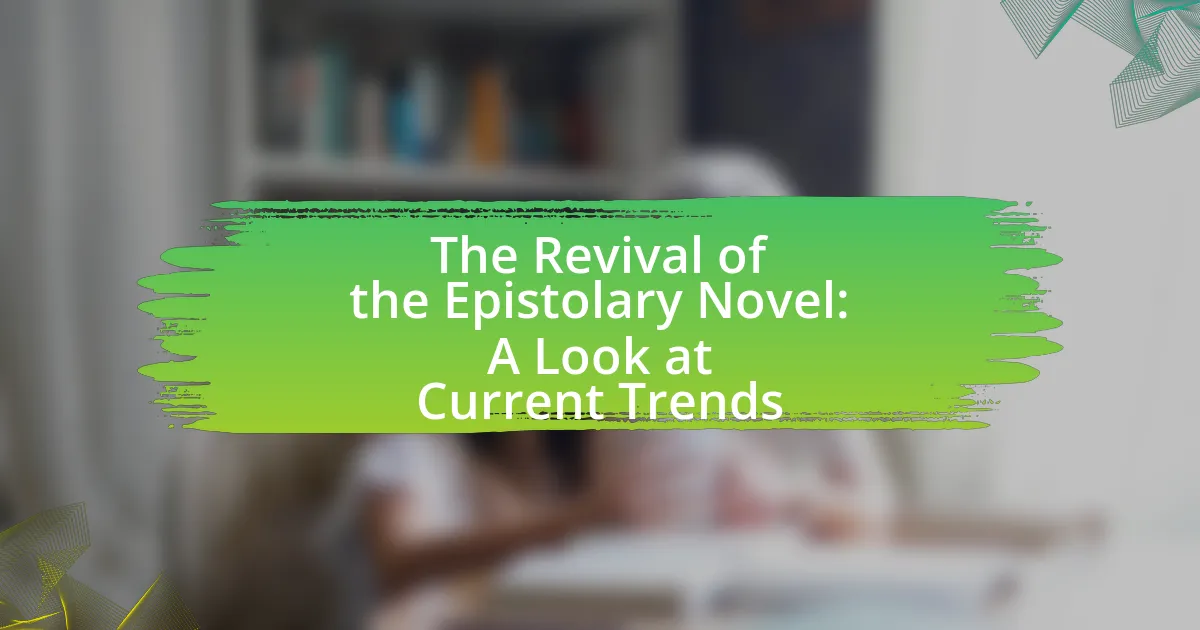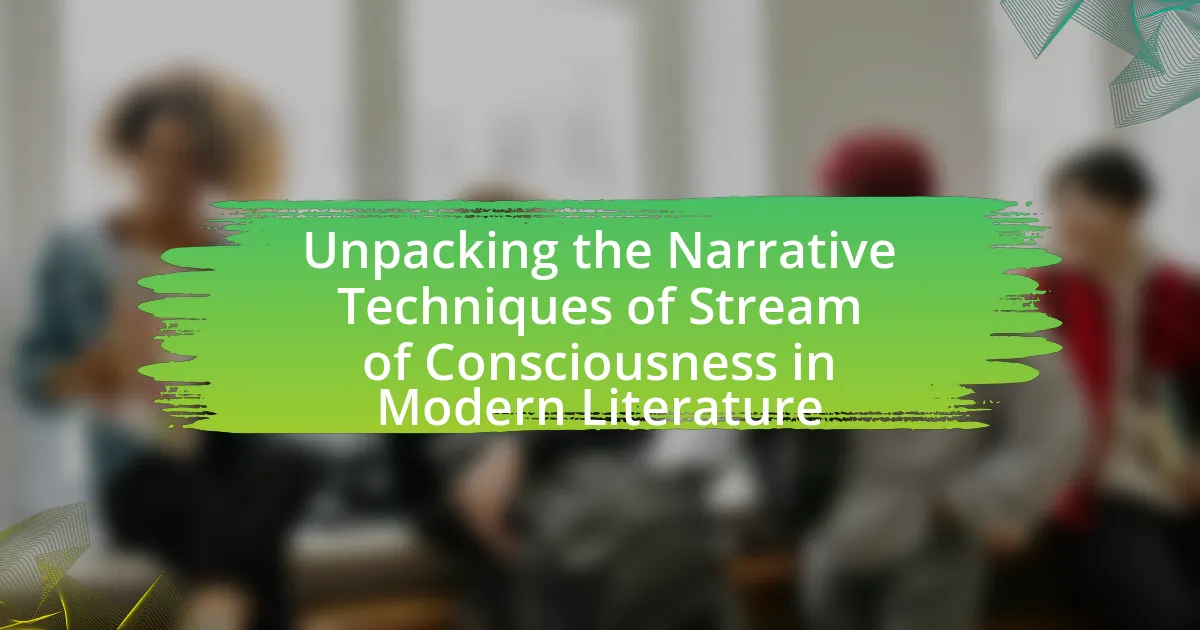Historical fiction through a modern lens is a genre that reinterprets historical events and figures by incorporating contemporary themes and perspectives, allowing for exploration of current social issues such as identity, race, and gender. The article outlines the evolution of historical fiction from strict adherence to factual accuracy to a broader interpretation that emphasizes emotional truth and thematic exploration. Key characteristics of modern historical fiction include a blend of factual events with fictional narratives, diverse perspectives, and a focus on character development. Noteworthy titles and leading authors in the genre are highlighted, along with the importance of engaging with historical fiction to foster empathy and understanding of current societal issues. The article also provides insights on how readers can analyze and connect historical narratives to contemporary challenges.
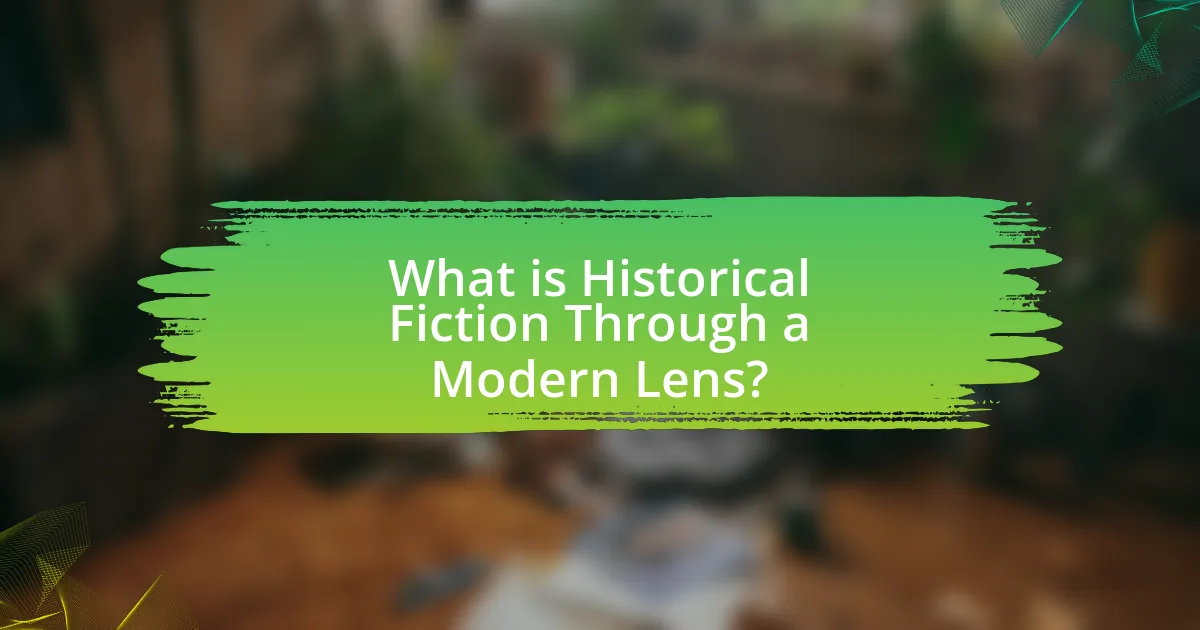
What is Historical Fiction Through a Modern Lens?
Historical fiction through a modern lens refers to the genre that reinterprets historical events and figures with contemporary themes, perspectives, and sensibilities. This approach allows authors to explore current social issues, such as identity, race, and gender, within the context of historical narratives, making them more relatable to today’s readers. For example, novels like “The Nightingale” by Kristin Hannah and “The Underground Railroad” by Colson Whitehead not only depict historical events but also resonate with modern discussions about resilience and systemic oppression, illustrating how historical fiction can bridge the past and present.
How has the definition of historical fiction evolved over time?
The definition of historical fiction has evolved from a strict adherence to factual events and figures to a broader interpretation that allows for creative liberties and character-driven narratives. Initially, historical fiction focused on accurately depicting historical events, often emphasizing the importance of research and authenticity, as seen in works like Sir Walter Scott’s “Waverley” in the early 19th century. Over time, particularly in the 20th and 21st centuries, authors began to prioritize emotional truth and thematic exploration over strict historical accuracy, leading to a genre that blends fact with imagination, as exemplified by novels like Hilary Mantel’s “Wolf Hall.” This shift reflects a growing recognition that historical fiction can serve as a lens through which contemporary issues are examined, allowing readers to engage with the past in a more personal and relatable manner.
What are the key characteristics of modern historical fiction?
Modern historical fiction is characterized by its blend of factual historical events with fictional narratives, focusing on character development and emotional depth. This genre often emphasizes authenticity in historical settings, incorporating meticulous research to accurately depict the time period, culture, and societal norms. Additionally, modern historical fiction frequently explores diverse perspectives, including marginalized voices, and addresses contemporary themes such as identity, trauma, and social justice, thereby resonating with current societal issues. For instance, novels like “The Nightingale” by Kristin Hannah highlight women’s experiences during World War II, showcasing both historical accuracy and emotional storytelling.
How do contemporary themes influence historical narratives?
Contemporary themes significantly influence historical narratives by shaping the interpretation and representation of past events. For instance, modern concerns such as social justice, gender equality, and environmental issues often prompt authors to re-examine historical contexts, leading to narratives that resonate with current societal values. A clear example is the resurgence of interest in marginalized voices in history, which has led to a reevaluation of events like the Civil Rights Movement, emphasizing the experiences of women and people of color. This shift not only alters the focus of historical narratives but also encourages readers to engage with history in a way that reflects contemporary ethical considerations and cultural dialogues.
Why is it important to explore historical fiction today?
Exploring historical fiction today is important because it provides insights into past societies, cultures, and events, allowing readers to understand the complexities of history through relatable narratives. Historical fiction often highlights underrepresented voices and perspectives, fostering empathy and a deeper connection to the human experience. For instance, novels like “The Nightingale” by Kristin Hannah illuminate the roles of women during World War II, showcasing their resilience and contributions, which are often overlooked in traditional historical accounts. This genre not only entertains but also educates, making history accessible and engaging for contemporary audiences.
What insights can historical fiction provide about current societal issues?
Historical fiction can illuminate current societal issues by drawing parallels between past events and contemporary challenges. For instance, novels set during the Civil Rights Movement, such as “The Help” by Kathryn Stockett, highlight themes of racial inequality and social justice, reflecting ongoing discussions about systemic racism today. Additionally, works like “The Book Thief” by Markus Zusak explore the impact of war and oppression, offering insights into the refugee crises and the consequences of authoritarian regimes in the modern world. These narratives provide context and understanding, allowing readers to engage with current issues through the lens of historical experiences.
How does historical fiction foster empathy and understanding?
Historical fiction fosters empathy and understanding by immersing readers in the experiences and perspectives of individuals from different historical contexts. This genre allows readers to engage with the emotional and social realities of past societies, thereby bridging the gap between their own lives and those of people who lived in different times and circumstances. For instance, novels like “The Book Thief” by Markus Zusak provide insight into the lives of ordinary people during World War II, highlighting their struggles and resilience. Such narratives encourage readers to reflect on the complexities of human behavior and the impact of historical events on personal lives, ultimately promoting a deeper emotional connection and understanding of diverse human experiences.
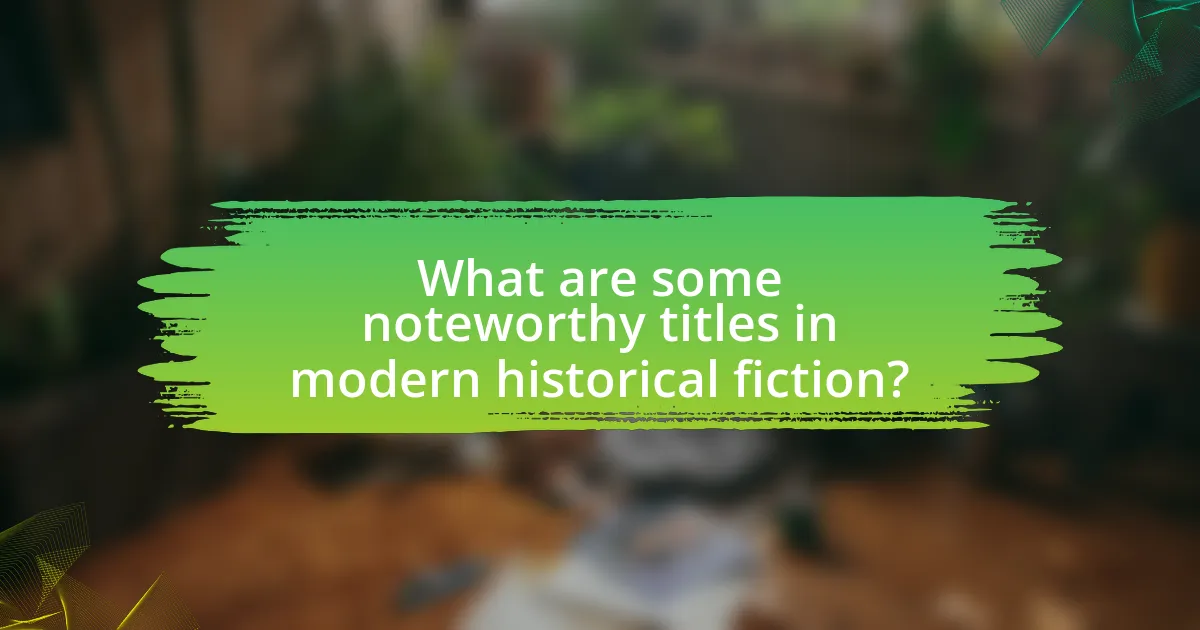
What are some noteworthy titles in modern historical fiction?
Noteworthy titles in modern historical fiction include “The Nightingale” by Kristin Hannah, “All the Light We Cannot See” by Anthony Doerr, and “The Book Thief” by Markus Zusak. “The Nightingale” explores the lives of two sisters in France during World War II, highlighting the resilience of women in wartime. “All the Light We Cannot See” tells the intertwined stories of a blind French girl and a German soldier during the same conflict, showcasing the impact of war on individual lives. “The Book Thief,” set in Nazi Germany, presents a unique perspective through the eyes of a young girl who finds solace in stealing books. These titles are acclaimed for their rich narratives and historical accuracy, making them significant contributions to the genre.
Which authors are leading the way in this genre?
Leading authors in the historical fiction genre include Hilary Mantel, Ken Follett, and Philippa Gregory. Hilary Mantel is renowned for her “Wolf Hall” trilogy, which offers a detailed portrayal of Thomas Cromwell’s life during the Tudor period, winning multiple awards including the Booker Prize. Ken Follett’s “The Pillars of the Earth” is a significant work that explores the construction of a cathedral in 12th-century England, showcasing his ability to weave intricate historical narratives. Philippa Gregory is well-known for her novels centered around the Tudor court, particularly “The Other Boleyn Girl,” which has gained popularity for its engaging storytelling and character depth. These authors are recognized for their contributions to the genre, blending historical accuracy with compelling narratives.
What themes do these authors commonly explore?
These authors commonly explore themes of identity, memory, and the impact of historical events on personal lives. For instance, they often delve into how individual experiences shape one’s sense of self against the backdrop of significant historical moments, illustrating the interplay between personal and collective histories. This thematic focus is evident in works that highlight the struggles of characters navigating their identities amidst societal changes, as well as the ways in which memory influences their understanding of the past.
How do their backgrounds influence their storytelling?
Authors’ backgrounds significantly influence their storytelling by shaping their perspectives, themes, and character development. For instance, an author with a multicultural background may incorporate diverse cultural elements and experiences into their narratives, enriching the authenticity and depth of their historical settings. Additionally, personal experiences, such as growing up in a specific historical context or facing particular societal challenges, can lead to unique insights that inform the plot and character motivations. This is evident in works like “The Nightingale” by Kristin Hannah, where her family history during World War II informs the portrayal of resilience and sacrifice, illustrating how personal and historical backgrounds intertwine to create compelling narratives.
What are some critically acclaimed historical fiction titles to read?
Some critically acclaimed historical fiction titles to read include “The Nightingale” by Kristin Hannah, “All the Light We Cannot See” by Anthony Doerr, and “The Book Thief” by Markus Zusak. “The Nightingale,” set during World War II in France, explores the lives of two sisters and their struggle for survival and resistance against the Nazi occupation. “All the Light We Cannot See” tells the intertwined stories of a blind French girl and a German soldier during the same war, highlighting the impact of conflict on individual lives. “The Book Thief,” narrated by Death, is set in Nazi Germany and follows a young girl’s relationship with her foster parents and her love for books amidst the horrors of war. These titles have received numerous awards and critical acclaim for their rich storytelling and historical accuracy.
What makes these titles stand out in the genre?
These titles stand out in the historical fiction genre due to their innovative narrative techniques and deep character development. For instance, they often blend factual historical events with fictional elements, creating a compelling and immersive experience for readers. Titles like “The Nightingale” by Kristin Hannah and “The Book Thief” by Markus Zusak utilize unique perspectives and emotional storytelling to highlight the human experience during significant historical moments, such as World War II. This combination of rich historical context and relatable characters allows these works to resonate with contemporary audiences, making them memorable and impactful within the genre.
How have readers and critics responded to these works?
Readers and critics have responded positively to the works in “Historical Fiction Through a Modern Lens: Noteworthy Titles to Explore.” Many readers appreciate the blend of historical accuracy with contemporary themes, which enhances relatability and engagement. Critics often highlight the authors’ ability to create immersive narratives that resonate with current societal issues, as seen in reviews from major literary publications. For instance, The New York Times Book Review noted that these works successfully bridge the gap between past and present, allowing readers to draw parallels and gain insights into modern life. This favorable reception is reflected in high ratings on platforms like Goodreads, where many titles receive an average rating above four stars, indicating strong reader approval.
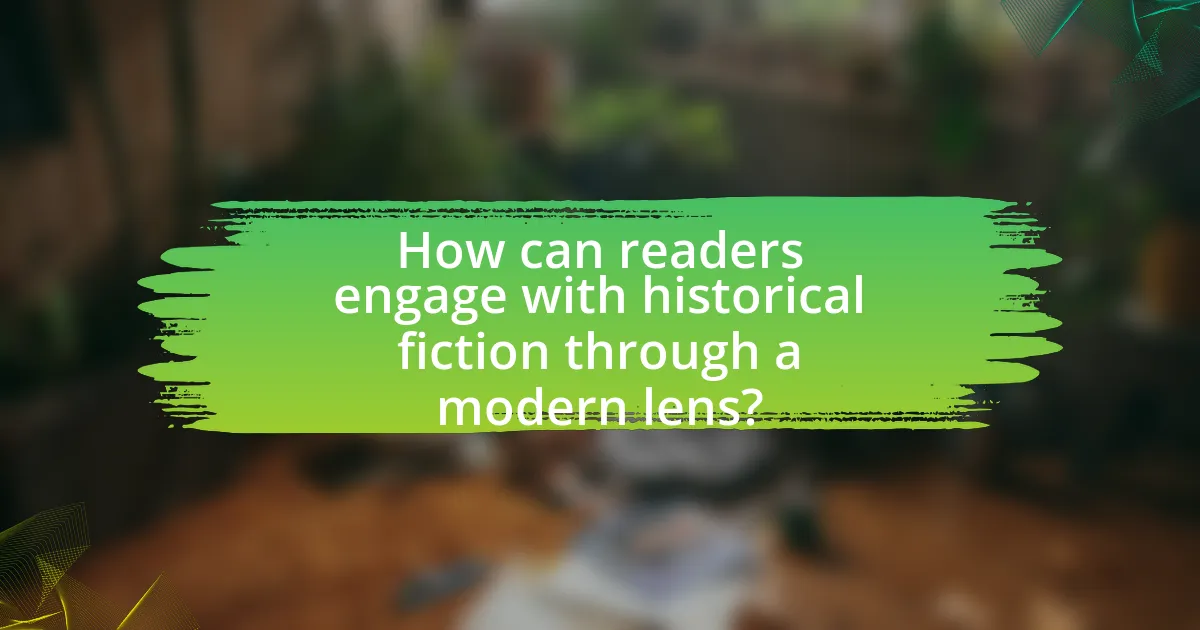
How can readers engage with historical fiction through a modern lens?
Readers can engage with historical fiction through a modern lens by analyzing contemporary themes and social issues reflected in the narratives. This engagement allows readers to draw parallels between past events and current societal challenges, such as race, gender, and class dynamics. For instance, novels like “The Nightingale” by Kristin Hannah highlight women’s roles during World War II, prompting discussions about gender equality today. Additionally, readers can utilize online forums and book clubs to share insights and interpretations, enhancing their understanding of how historical contexts influence modern perspectives.
What are effective ways to analyze historical fiction?
Effective ways to analyze historical fiction include examining the accuracy of historical details, understanding the author’s perspective, and exploring character development within the historical context. Analyzing the accuracy involves comparing the events, settings, and cultural elements presented in the narrative with established historical facts, such as those found in primary sources or scholarly works. Understanding the author’s perspective requires considering the time period in which the author wrote, as well as their background and intentions, which can influence the portrayal of historical events. Additionally, exploring character development helps to reveal how individuals navigate their historical circumstances, providing insight into the social and political dynamics of the time. These methods collectively enhance the understanding of how historical fiction reflects and interprets real events and societal issues.
How can readers identify historical accuracy in narratives?
Readers can identify historical accuracy in narratives by cross-referencing the events, characters, and settings depicted in the story with established historical records and scholarly sources. For instance, consulting primary sources such as letters, diaries, or official documents from the time period can provide insight into the authenticity of the narrative. Additionally, reputable historical analyses and academic publications can serve as benchmarks for verifying the accuracy of the portrayed events. For example, a narrative set during World War II should align with documented timelines, key battles, and social conditions of that era as outlined in historical texts like “The Second World War” by Sir Winston Churchill. By employing these methods, readers can discern the factual basis of the narrative and its fidelity to historical truth.
What role does research play in understanding these stories?
Research plays a crucial role in understanding historical fiction stories by providing accurate context, character development, and plot authenticity. It enables authors to weave factual elements into their narratives, ensuring that the portrayal of historical events, cultures, and figures is credible. For instance, a study published in the Journal of Historical Fiction highlights that well-researched novels often receive higher ratings from readers due to their immersive and believable settings. This demonstrates that thorough research not only enriches the storytelling but also enhances the reader’s engagement and comprehension of the historical backdrop.
What tips can enhance the reading experience of historical fiction?
To enhance the reading experience of historical fiction, readers should immerse themselves in the historical context of the narrative. Understanding the time period, key events, and cultural nuances can deepen appreciation for the characters and plot. For instance, reading supplementary materials such as historical articles or biographies related to the era depicted in the novel can provide valuable insights. Engaging with discussions or book clubs focused on historical fiction can also enrich the experience by allowing readers to share perspectives and interpretations, fostering a deeper connection to the text.
How can readers connect historical events to contemporary issues?
Readers can connect historical events to contemporary issues by analyzing parallels in social, political, and economic contexts. For instance, the civil rights movements of the 1960s can be compared to current discussions on racial equality and justice, highlighting ongoing struggles against systemic racism. Historical events provide a framework for understanding the roots of contemporary issues, as seen in the economic impacts of the Great Depression, which resonate in today’s discussions about income inequality and economic policy. By examining these connections, readers gain insights into how past events shape current societal dynamics, reinforcing the relevance of history in understanding modern challenges.
What resources are available for further exploration of the genre?
Resources for further exploration of the historical fiction genre include academic journals, online databases, and curated reading lists. Academic journals such as “The Historical Novel Society Journal” provide critical essays and reviews on contemporary historical fiction. Online databases like JSTOR and Project MUSE offer access to scholarly articles and research papers focused on historical narratives. Additionally, websites like Goodreads and LibraryThing feature user-generated lists and recommendations that highlight noteworthy titles within the genre, facilitating deeper engagement with historical fiction.


![How [Author’s Name] Redefined a Genre](https://hotkeyblog.com/wp-content/uploads/Featured-image-How-Authors-Name-Redefined-a-Genre-150x150.webp)


